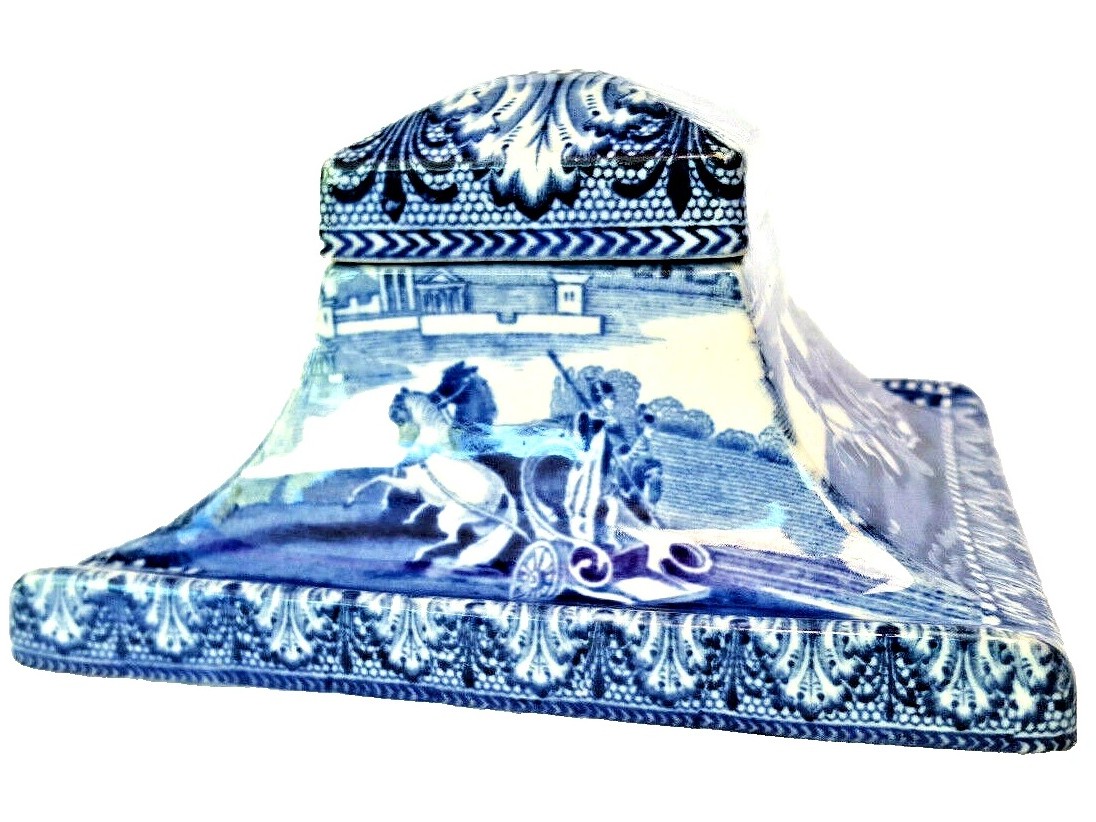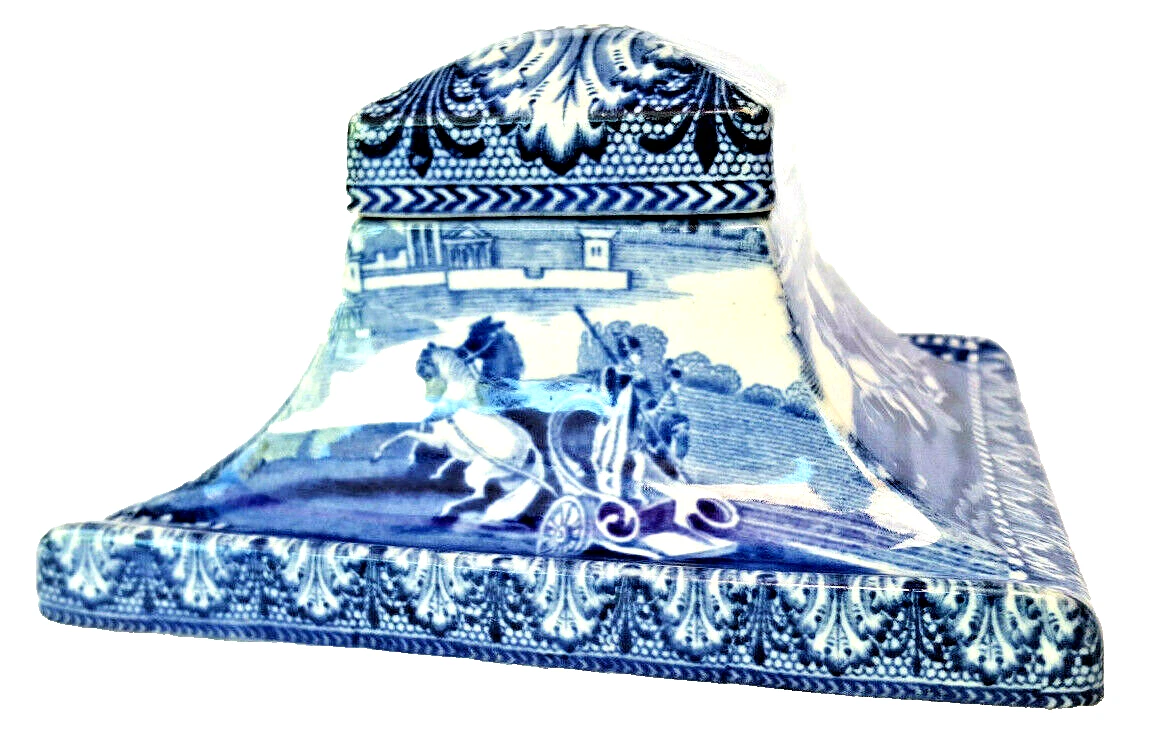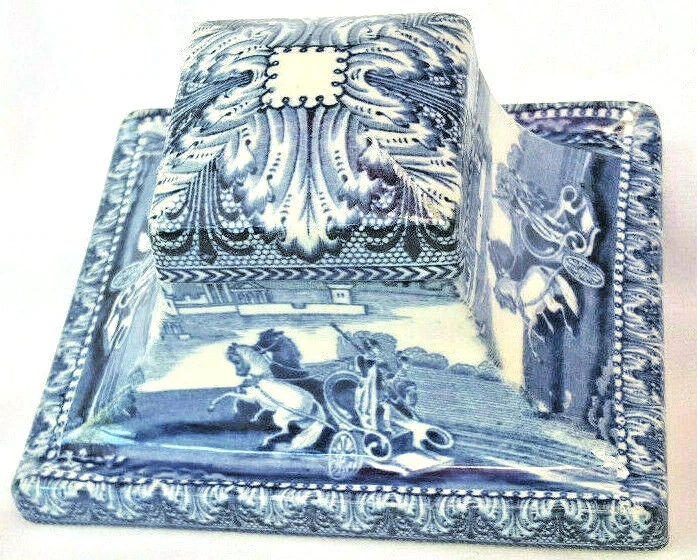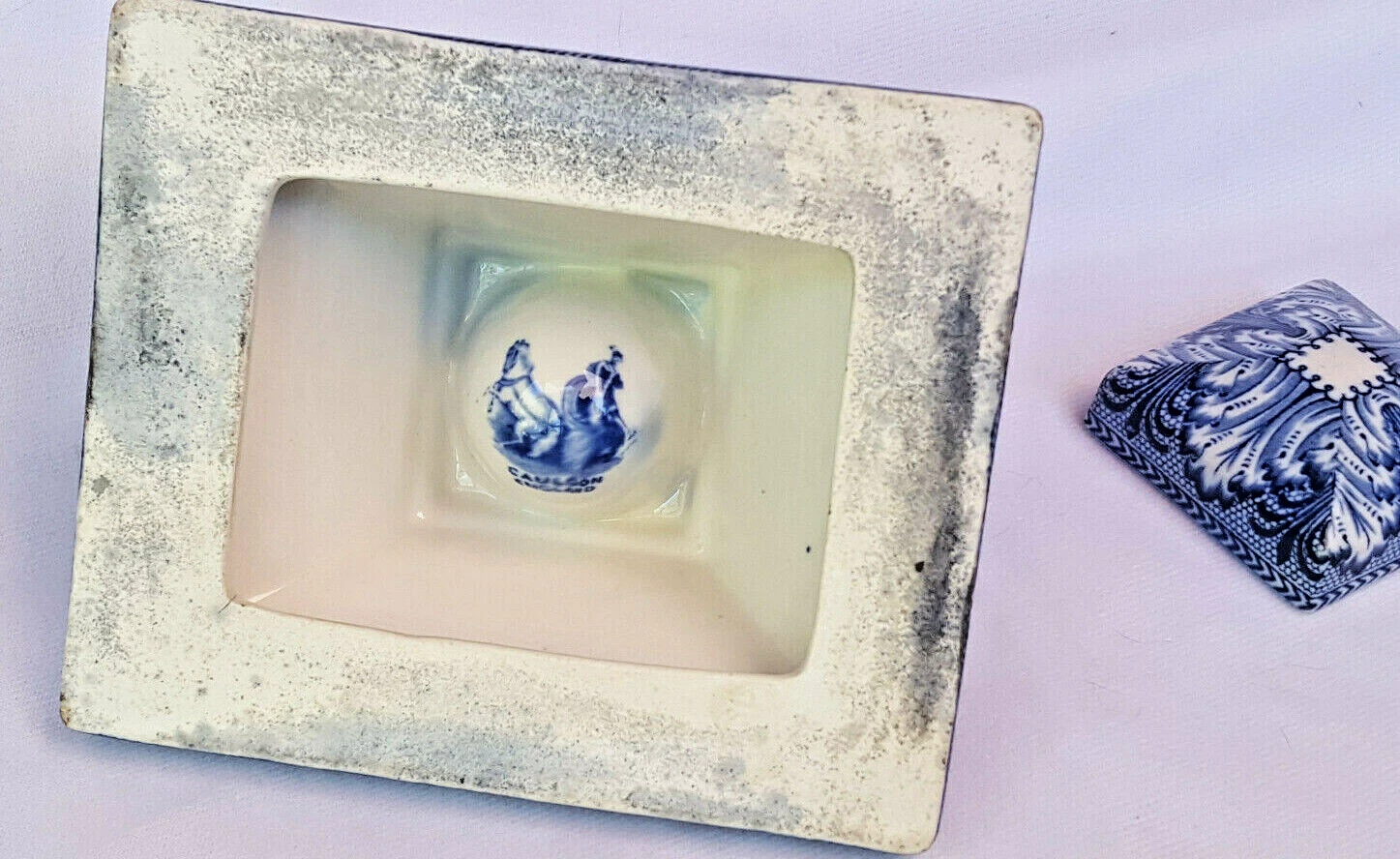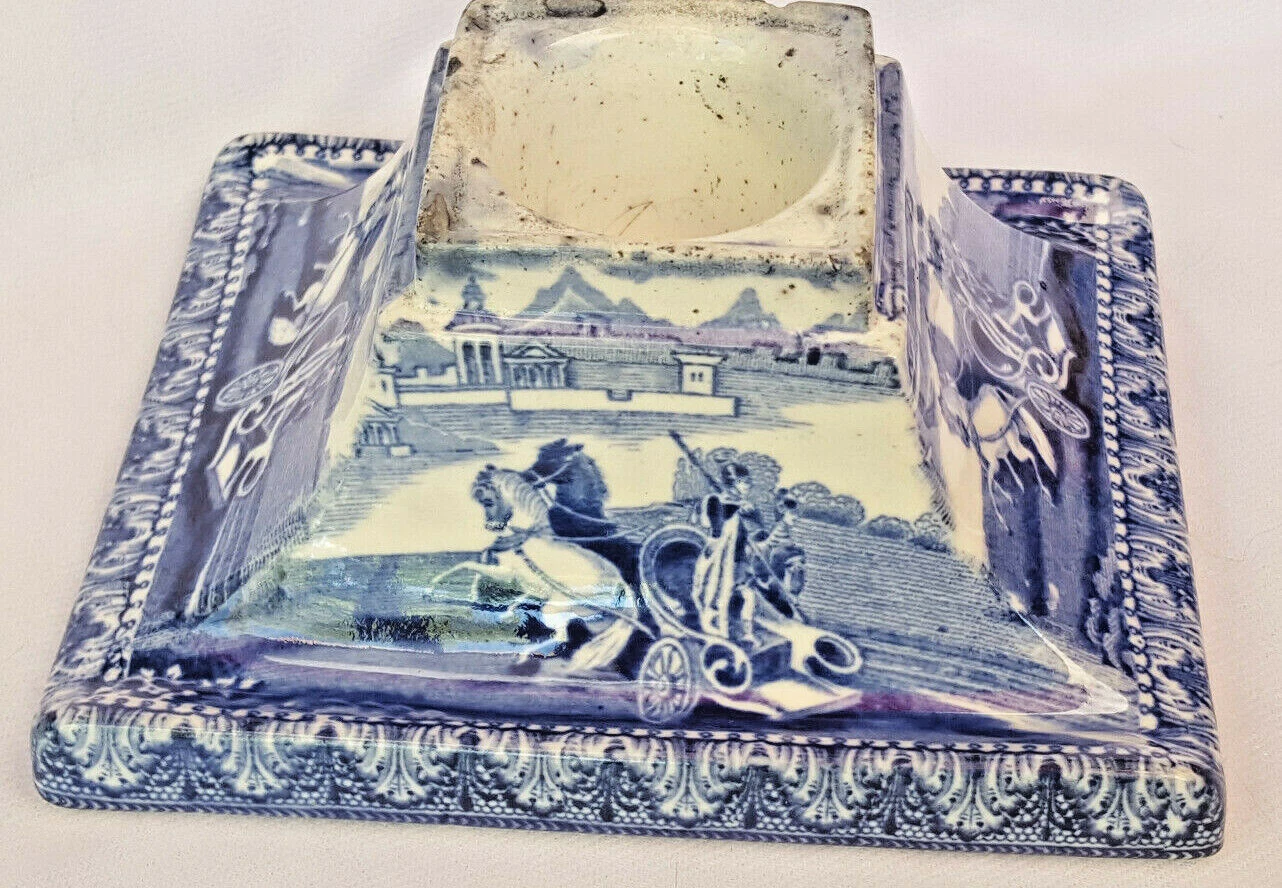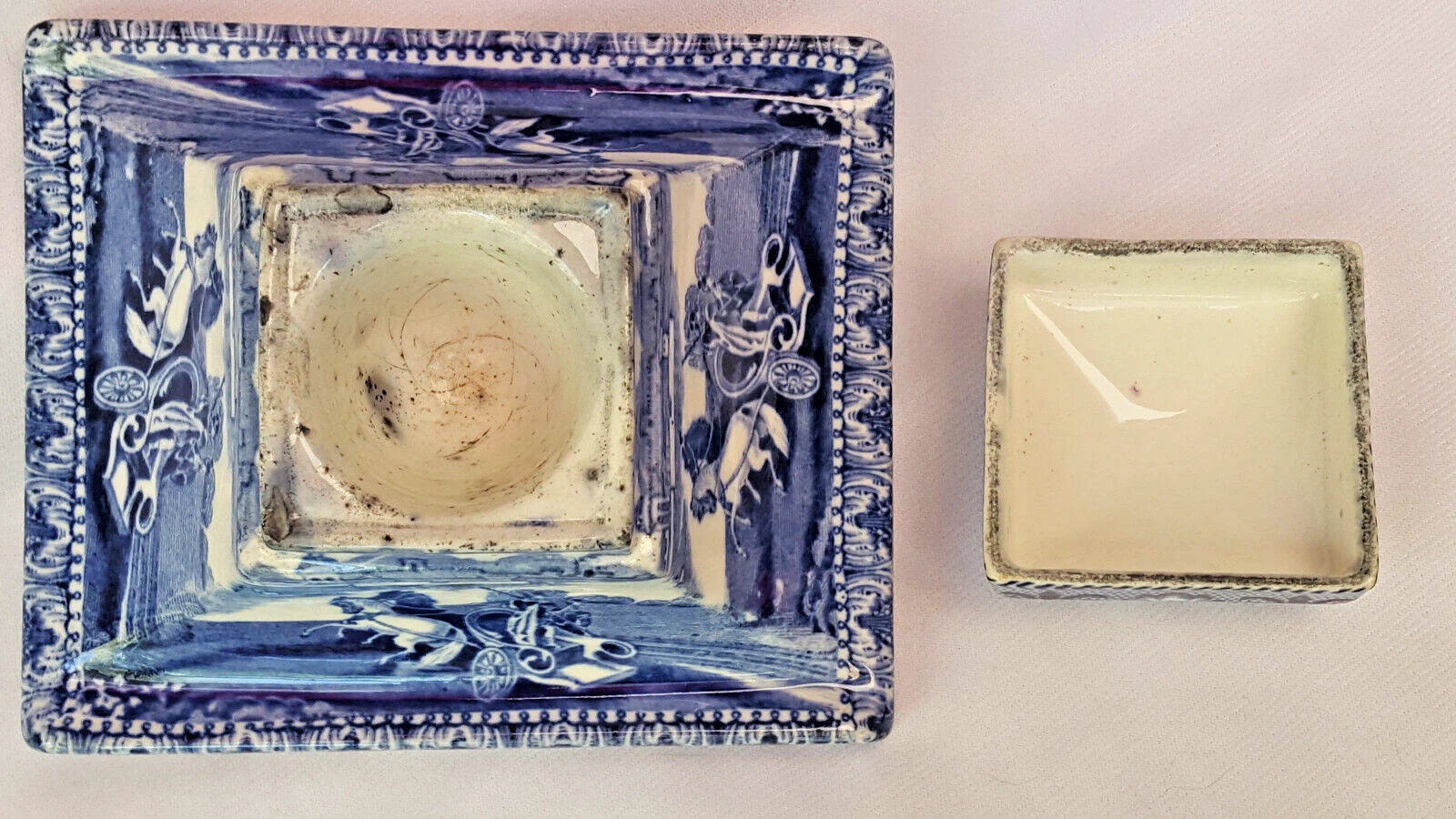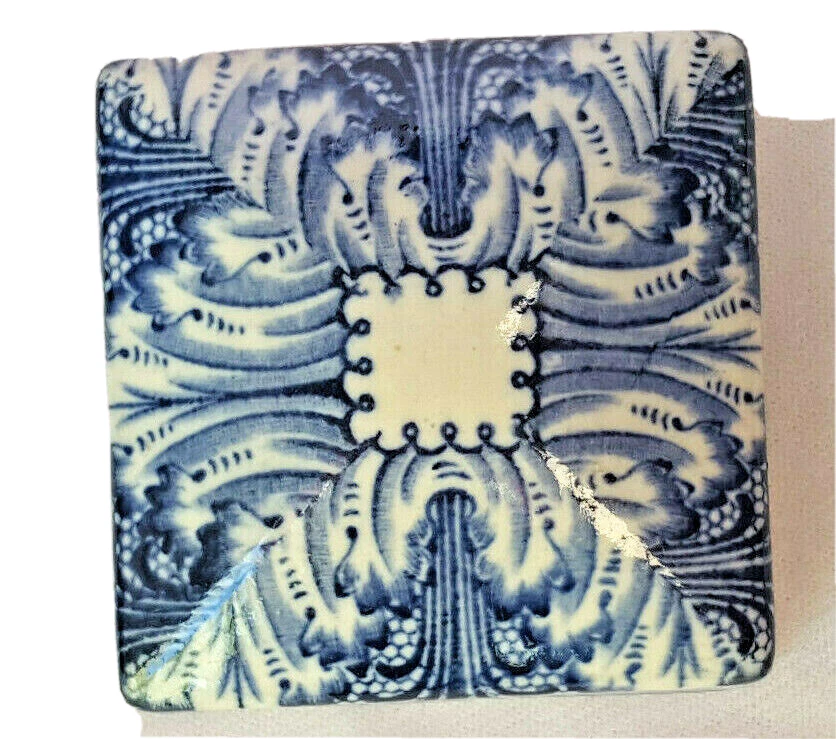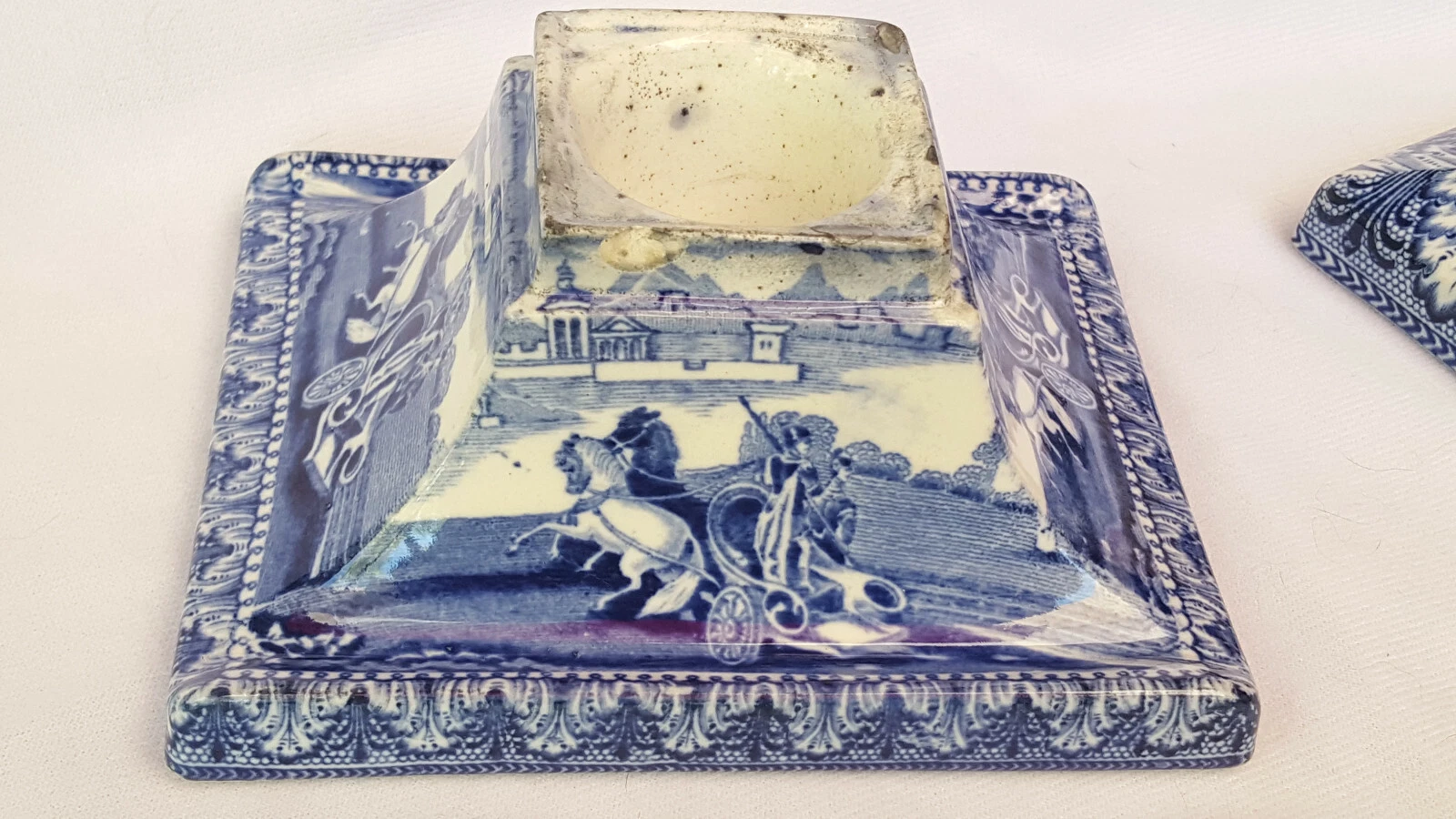
Cauldon “Arcadian Chariot Design” Inkwell
| Categories | Ceramics/Porcelain "Named" Makers |
| Material | Earthenware |
| Markings | See Narrative |
| Manufacturer | Cauldon |
| Origin | England |
| Date or Era | circa 1910 |
| Measuring | 5 ¼” x 4 ¼” x 3” high |
Cauldon “Arcadian Chariot Design” Inkwell
- Material: The inkwell is made of earthenware and is covered in a glossy, decorative glaze. The use of fine pottery, as opposed to metal or glass, is confirmed by its provenance with Cauldon.
- Form and Structure: The inkwell has a low cuboid shape. The sides of the base are the primary display area.
- Decoration: The “Arcadian Chariot” Pattern:
- The inkwell is decorated with a detailed transfer print (a printed image applied to the pottery before glazing and firing) in a rich blue against a white background (a style known as blue and white transferware).
- The scene is a classical or Neoclassical motif, depicting chariots, horses, and riders in a triumphal setting. The design is continuous, running along all four sides of the base.
- The background features classical architectural elements, such as Doric columns, and a composed landscape.
- Date: The period —early 1900s (c. 1905–1920)—is consistent with the marks and production period of the pottery known as Cauldon Ltd. before it became Cauldon Potteries Ltd. in 1920.
What is Cauldon?
Cauldon is a name associated with a long and complicated succession of highly respected Staffordshire potteries in England.
- Location: The works were located at Cauldon Place, Shelton, Hanley, in the heart of the “Potteries” region of Stoke-on-Trent, England.
- History: The factory traces its lineage back to Job Ridgway who built the Cauldon Place Works in 1802. Over the decades, the ownership and company names changed multiple times.
- The Mark on the Inkwell (Early 1900s): The mark “Cauldon” or “Cauldon England” from the early 1900s usually corresponds to the company trading as Cauldon Ltd. (1905–1920), which was the successor to the established firm of Brown-Westhead, Moore & Co.
- Reputation: Cauldon and its predecessors were known for producing high-quality ceramics, including fine bone china and earthenwares, and often received Royal Warrants. They were particularly noted for their decorative pieces and services.
What is “Arcadian”?
In the context of this inkwell, “Arcadian” refers to the style of the decoration, and sometimes the entire line of ceramics.
- Arcadian Meaning: The term “Arcadian” derives from Arcadia, a mountainous region in Greece idealized in classical literature and Renaissance art. It symbolizes a blissful, pastoral, and harmonious paradise—a setting of natural innocence and simplicity.
- Arcadian Design in Ceramics (Neoclassical): When applied to pottery, “Arcadian” design refers to:
- Classical Subject Matter: Scenes like the chariots, mythological figures, nymphs, or shepherds in composed, idyllic landscapes.
- Neoclassical Influence: The design is part of the broader Neoclassical style, which drew inspiration from the art and architecture of ancient Greece and Rome, often using restrained colors (like blue and white) and formal compositions.
- “Arcadian Chariot”: In this case, “Arcadian” emphasizes the classical, idealized nature of the horse-drawn chariot scene, a popular motif that Cauldon used on various forms of tableware and decorative items, including this inkwell.
Sold for $135 in September 2025
Content disclaimer. The information posted is the owner’s best knowledge and may not have been vetted by the SOIC. We welcome comments, corrections, and additions, working to make our website information comprehensive and accurate.
Join the Society of Inkwell Collectors (SOIC) – it’s free!
Founded in 1981 as a non-profit organization,
we are documenting inkwells (and accessories).
We’re here to help and inform!
